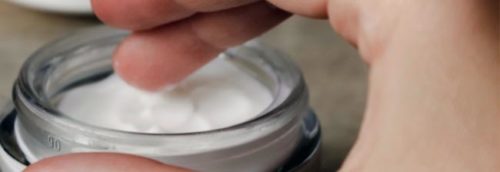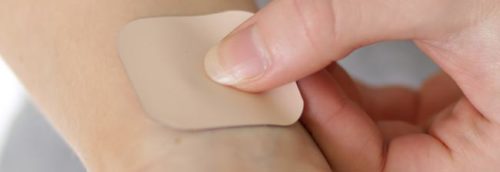
As CBD bursts into mainstream consciousness, this powerhouse cannabinoid can be found in an increasingly diverse range of products. Consumables like capsules and tinctures rule the market, but topically applied CBD is used by a growing number of people. From salves and balms to lotions and other beauty products there is a wide variety of ways to apply this cannabinoid to the skin.
While the educational resources on ingested CBD are broad, topical use is less discussed and understood. In this article, we take you through every aspect of applying hemp CBD-infused products to your skin. We cover the basics, how topicals work, what types are available, and finally help you decide when and why you'd use these types of products.
What are CBD Topicals & How do they Work?
Speaking broadly, CBD topicals are any hemp-infused product that is designed to be applied to the skin.
The body has within it a vast network of receptors called the endocannabinoid system or ECS for short. The cannabis compounds found in hemp interact with these receptors to help maintain homeostasis (balance) throughout the bodily systems. Endocannabinoid system receptors are found in the brain, immune cells, organs, connective tissues, glands - and the skin.
Topical CBD works differently than ingested products. When you swallow capsules or hold a tincture under the tongue, the cannabis content in the product is absorbed into the bloodstream through the digestive process or via the mucous membranes. These compounds then act on a "system-level" throughout the body - generally over a 4-8 hour period.
When applied topically, CBD penetrates through the skin to interact with the local ECS receptors. These products help maintain healthy skin function and can be used to target specific issues like soreness or skin conditions. Topicals can work for extended periods because the active ingredients are applied, absorbed and interact directly with the affected skin area (and beyond!).
For more information on how CBD is absorbed and made active in the body, see our article which covers the various methods of ingesting CBD.
What Types of CBD Topicals are Available?
As we mentioned in the intro, there are quite a few core types of topical CBD products available. Within these main groups there are then an almost countless number of subtle variations available.
CBD Salves, Balms, & Ointments

These are the most popular type of CBD topicals available. Despite the difference in name, salves, balms, and ointments can generally be lumped into one category. They all share the same common core ingredients which include:
- A natural wax (beeswax being the most popular)
- A fatty oil base (to carry the hemp compounds into the skin)
- The hemp extract (full/broad-spectrum or isolates are used)
- Other optional ingredients (often essential oils or other fragrances)
The differences between a salve, balm or ointment are in the consistency. Balms are generally thicker, having a higher concentration of beeswax, while salves or ointments are runnier because they have a lower wax content. The consistency of the topical is simply preference and won't have an effect on performance.
The oil component (often coconut-derived MCT oil) helps carry the active ingredients, including the cannabinoids and terpenes, into the skin. All of the products in this category are designed to go on and stay on the skin in order to provide extended relief during and after the period of absorption.
CBD Creams & Lotions

Creams and lotions are similar to balms and salves except they contain a combination of oil and water. These products are formulated to hydrate the skin and seal in moisture. As a result, the ingredients list is much longer. These products are then infused with CBD extract in order to provide the added benefits that come with it's use.
Where the goal of a salve or balm is simply to get the CBD content to the skin, creams, and lotions offer additional benefits beyond just applying CBD to the skin. This can lead to great synergies like a moisturizing CBD cream but may suffer drawbacks like a less potent application or shorter duration depending on the product composition.
Transdermal CBD Patches

A transdermal patch is a CBD-infused stick-on that is applied to the skin. They are designed so that the hemp extract held within the patch wants to move away from the patch through the skin. This creates a regulated, continuous supply of localized CBD content to the skin. With most topicals, the cannabinoids don't breach the bloodstream; they only penetrate to the ECS receptors within the skin. Transdermal patches, however, do deliver cannabinoids to the bloodstream.
This creates a situation where a topically applied CBD can act on a system-level like an ingested product, while also providing localized support. This all comes with an extended duration - lasting up to 8 to 12 hours. This may be ideal for those who need system-level or extended localized support, but can't handle or don't prefer tinctures or capsules.
CBD Bath Bombs

The idea with an infused bath bomb it to apply these crucial hemp ingredients on a whole-body scale. This is accomplished by adding a hemp extract into a standard bath bomb. When added to the bath, the CBD content in the balm then disperses throughout the water and is absorbed into the skin.
While the idea is great, it's easy to argue that this isn't an effective way of applying CBD to the body. With CBD being hydrophobic (not combining with water just like oil) it's also fair to assume CBD itself may just be floating on top of the bath the whole time, with minimal skin contact. Some companies may work to utilize an emulsified, water-soluble CBD in their balms, but today that isn't the standard practice.
Even with proper dispersion, the concentration of the content in the balm is quickly diluted in the bath and it's questionable how much of the active ingredients in the extract are actually making it into the skin. It could also be argued that the added benefits are minimal if not just a placebo and that most of the goodness comes from bath bombs being what they are.
Regardless, there are many who swear by CBD-infused bath bombs and love the effects. If you're interested in giving them a try, we do suggest letting experience be the judge.
Does the Entourage Effect Apply to Topicals?
A great question came in recently: Does the entourage effect apply to topicals? In other words, are the benefits of a full or broad-spectrum extract wasted on topicals and is CBD isolate just as effective when applied topically?
This question is referring to the entourage effect. It's the well known and scientifically documented concept that a whole-plant extract rich in cannabinoids and terpenes performs better and requires lower dosages than a terpene-less, CBD-only isolate. This concept is widely discussed in reference to consumable products, but not discussed when it comes to topicals.
The answer to the question is: Yes, the entourage effect applies to topicals! Full and broad-spectrum topical products are preferred over CBD isolate. Here are a few logically based reasons:
- The cannabinoid receptors in the skin are the same as those found in other areas of the body, thus all the cannabinoids in the extract would bind to them, not just CBD.
- Cannabinoids beyond CBD have been used in topical applications. For example, THC is widely used in topical applications. Therefore the presence of both major and minor cannabinoids in a topical product is significant.
- Terpenes, like those found in full/broad-spectrum products and essential oils, are widely used for added benefit in topicals. They also have an effect on the way cannabinoids are transported across the skin barrier.
For this reason, just as we recommend with ingestible products, we suggest opting for full/broad-spectrum topicals over isolate-based products.
When to Choose Topical CBD

Even with an understanding of how topical CBD products work, you may still be wondering when you'd choose them, especially when faced with a wide range of product choices available today. Our view on topicals is that they are perfect in two cases:
- If you have a specific skin or localized issue that you need regular support with.
- As a compliment to an ingestible product to be used on an as-needed basis.
For example, someone with an ongoing skin issue may choose to apply topical hemp extracts regularly. These customers might never use an ingestible product as their issue is localized and specific. As a contrasting example, we find that many people, for example athletes, choose to use both ingestible and topical CBD in tandem. This allows them 'system-level' support of an ingestible combined with local, specific support of a topical.
Beyond these standard regular use cases, there are many 'special occasion' cases where a CBD topical might be a great go-to. Bath bombs being a great example, a CBD massage being another.
We hope this article has given you the complete 101 level understanding of CBD topicals, how they work, and when to choose them. If you have any further questions or comments, please leave them in the comments section below or shoot us a message via our contact page.







